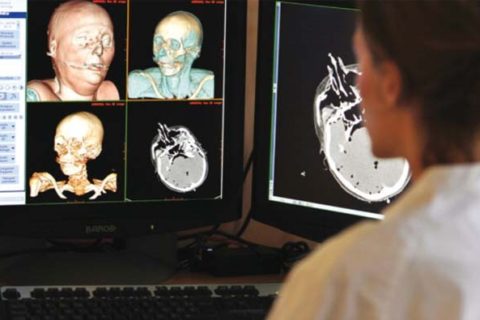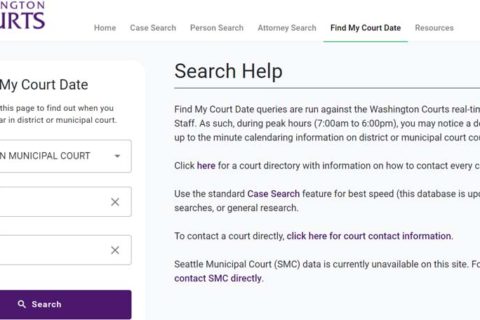Crime scene cleaner job is one of the most interesting and unique jobs in the world. It is such an important job that keeps homes, businesses, and other places safe and sanitary. The main job of the crime scene cleaners is to clean up the scenes of crimes, which can include cleaning of blood, body fluids, and even tear gas, and show compassion to the people who are affected by them. For anyone who finds the job as a crime scene cleaner interesting, you may want to find out what education is needed to be a crime scene cleaner. So, what education do you need to be a crime scene cleaner?
Just like most careers, there are also some requirements to become a crime scene cleaner. If you are wondering what education is needed to become a crime scene cleaner, there is no formal informal requirement to be one. However, there are a lot of bioremediation companies that offer OSHA training and on-the-job education sessions. There are a few training programs that may be encountered by those who want to become a crime scene cleaner. Some of them include:
- Bloodborne pathogen training
- Personal protective equipment (PPE) training
- Respiratory protection training
- Hazardous communication training
- Medical waste handling and transporting training
- Heat-illness awareness training
These followings will uncover bloodborne pathogen training, which is also known as OSHA’s bloodborne pathogens standard. Make sure to understand everything so that you will be able to be a great crime scene cleaner.
Bloodborne pathogens refer to infectious microorganisms that are found in the blood. They are dangerous as they can cause disease in humans. For your information, these pathogens include, but are not limited to, hepatitis B virus or HBV, hepatitis C virus or HCV, and human immunodeficiency virus or HIV, the one that can cause AIDS. If a worker is exposed to bloodborne pathogens, there is a chance of them getting a serious illness or an illness that can put their life at risk.
There are a few requirements of OSHA’s bloodborne pathogen standards. All of them can be found in Title 29 of the code of Federal Regulations at 29 CFR 1910.1030. The requirements of the standard state what should be done by the employers, which is to protect all the workers who are occupationally exposed to blood or other potentially infectious materials or OPIM, as defined in the standard. It means, the standard protects every worker who can reasonably be anticipated to come into contact with blood or OPIM as a result of doing their job duties.
Generally, the employers are required by the OSHA’s bloodborne pathogens standards to do a few things, such as:
- Establishing an exposure control plan to eliminate or to reduce the risk of the occupational exposures. It is a must for the employers to prepare an exposure determination that has a list of job classifications in which every worker has occupational exposure and a list of job classifications in which a few workers have occupational exposure, as well as a list of every task and procedure performed by all the workers that result in their exposure.
- Updating the plan every year to reflect changes in tasks, procedures, and positions that affect occupational exposures. Not only that, they also update the technological changes that get rid or minimize occupational exposure. Besides, it will also be needed for them to document in the plan that they have considered and started using appropriate, commercially-available effective safer medical devices made to get rid or reduce occupational exposure. In addition, they also have to document that they have solicited input from workers who work at the front in identifying, evaluating, and choosing effective engineering and work practice controls.
- Implementing the use of universal precautions.
- Identifying and using engineering controls. They are devices that isolate or get rid of the bloodborne pathogens hazard from the workplace. The list includes sharps disposal containers, self sheathing needles, and safer medical devices, such as sharps with engineered sharps-injury protection and needleless systems.
- Identifying and ensuring the use of work practice controls. They are the practices that minimize the possibility of exposure by changing the method a task is done, such as appropriate practices for handling and disposing of contaminated sharps, handling specimens, handling laundry, and cleaning contaminated surfaces and items.
- Providing personal protective equipment or PPE, including gloves, gowns, eye protection, and masks. It is a must for the employers to do a few things, such as cleaning, repairing, and replacing this equipment as needed.
- Making available hepatitis B vaccinations to every worker with occupational exposure. It is a must for the vaccination to be ordered after the worker has received the required bloodborne pathogens training and within 10 days of initial assignment to a job with occupational exposure.
- Making available post-exposure evaluation and follow-up to any occupationally exposed worker who gets experienced an exposure incident. It is a must for the evaluation and follow-up to be at no cost to the worker and includes documenting the route of exposure and the circumstances.
- Using labels and signs to communicate hazards.
- Providing information and training to workers. It is a must for the employers to ensure that their workers get regular training that covers every element of the standard including but not limited to information on bloodborne pathogens and diseases, methods that are used to control occupational exposure, hepatitis B vaccine, and medical evaluation and post-exposure follow-up procedures.
- Maintaining worker medical and training records.
Are there other qualifications required to become a crime scene cleaner? Before choosing a crime scene cleaner as your job path, you have to know that this job is not an easy one. Those who lack a clear understanding of the job better think about this job twice as it is intense and takes long hours. This job requires a strong commitment to the job and families they serve, which includes exhibiting compassion and integrity while at the same time adhering to all health and safety regulations so that everyone who is involved in the process can be protected.

A bookworm and researcher especially related to law and citizenship education. I spend time every day in front of the internet and the campus library.





